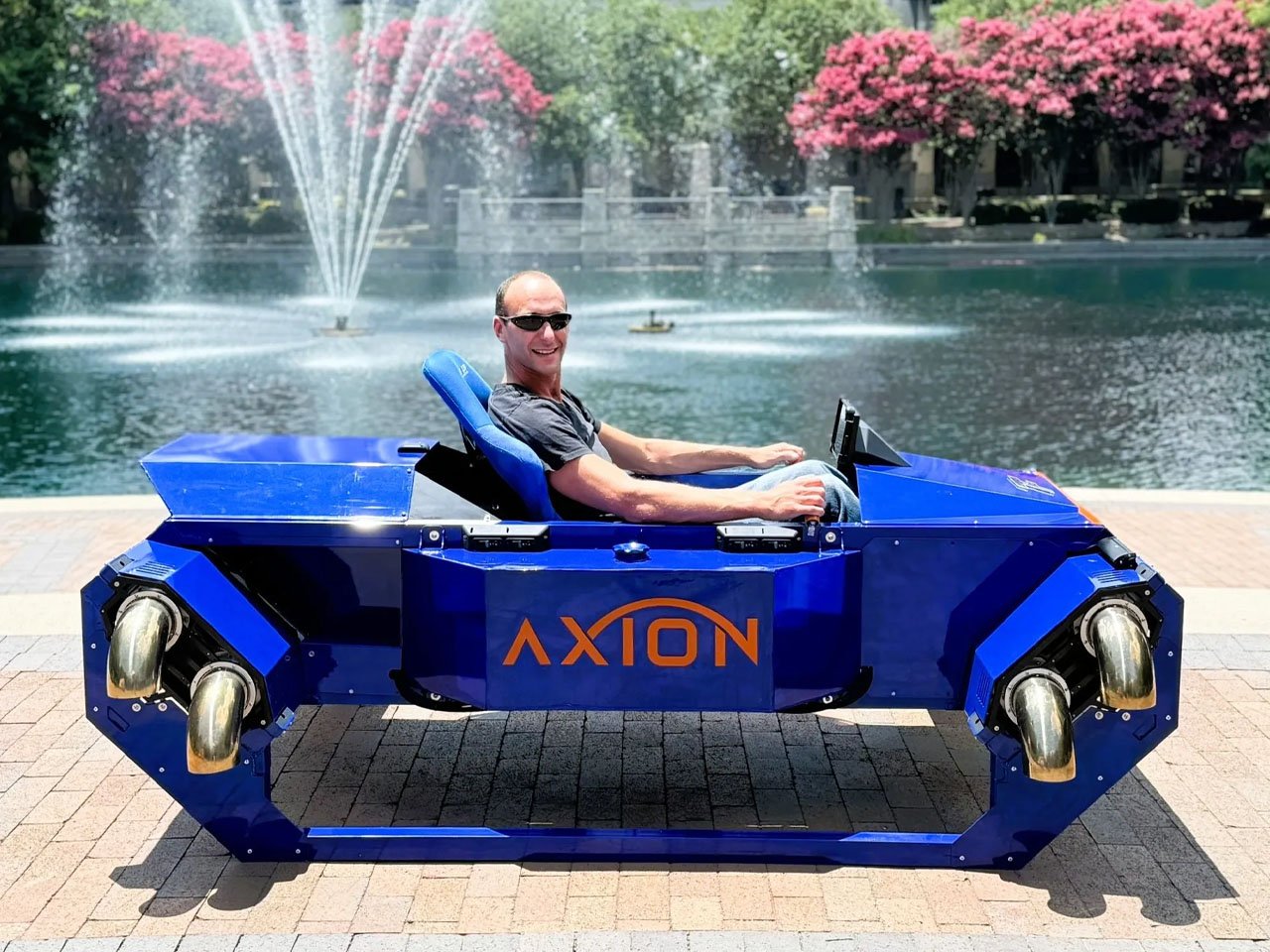The craze for flying commuters is not going to die anytime soon. Whether they are a practical option or not, for most urban spaces and cross-state transportation, is anybody’s guess. There have been a lot of prototypes (some nearing production phase) and concepts we’ve seen in the last few years including the AeroHT eVTOL, Jetson ONE, or CycloTech. Another one joins them in the prototype stage with a form factor unlike any other that is close to meeting fruition.
Texas-based FusionFlight has announced the Axion aircraft, which is an improved version of the AB5 JetQuad prototype introduced in 2019 that was eventually superseded by the improved model. Codenamed AB6 quadcopter VTOL, the compact jet-engine drone measuring almost the size of a large suitcase produced 840N of thrust from its quad jet engine setup. The flying machine has a top speed of 250 mph and a flight time of 15 minutes on a full tank of 5 gallons.
Designer: FusionFlight
The AB6 has its limitations, and that’s where the Axion comes in. Most importantly, it is a manned flying vehicle, unlike its predecessor, which is only good for unmanned operations. That explains the single-passenger aircraft’s larger size (comparable to a hatchback) and total weight of 330 lbs. The diesel or kerosene-powered aircraft can haul a load of 80 kg, meaning the VTOL is not meant for people who weigh beyond that limit. Understandably, to carry that much load, it has eight micro-turbine jet engines that deliver a combined thrust of 809 lb-ft. This gives Axion the freedom to take off and land vertically on any terrain. The top forward speed of 225 mph is another plus, especially in search and rescue missions. In case of an engine failure, the other working jet engines can make it fly safely to the nearest landing spot.
The rider can maneuver the flying vehicle via two fly-by-wire joysticks in manual mode. For autonomous flight, simply selecting the destination on the touchscreen is all that’s required. That gives the aircraft the ability to fly unmanned via remote control input. This should be useful in hauling cargo to remote locations where transportation is still a bottleneck. In the unmanned mode, the flight time should get a little boost as the VTOL doesn’t have a human flyer onboard.
Axion has a 15-gallon fuel tank, but given it has to carry a much higher load, the fly time remains at 15 minutes just like its predecessor. According to Founder Alex Taits, the ground tests of the VTOL have already begun, and the inaugural test flight is scheduled for the end of this year. FusionFlight has plans to build the Axion to order for a price tag of $289,995. That should mean the VTOL is going to be only within the reach of the fat-pocketed. We just hope the development team makes everything safe when it hits the production lines. After all, who wants to revisit the horrors of the catastrophic Titan submersible implosion?
The post FusionFlight’s Axion is a jet-powered VTOL getting flight ready by next year first appeared on Yanko Design.

